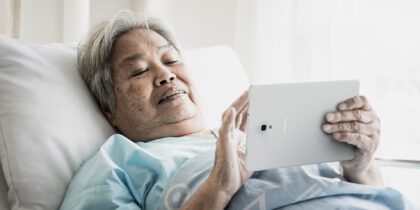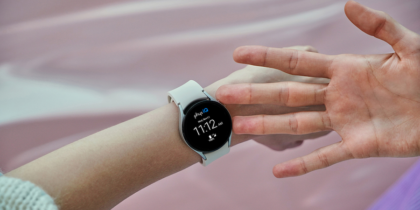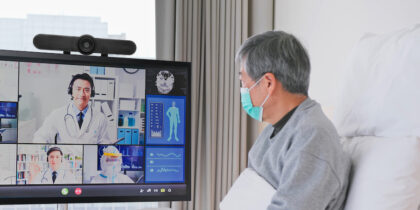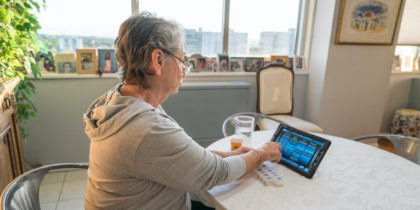2016 was a big year for remote patient monitoring. As new and increasingly sophisticated telehealth solutions entered the market, more healthcare providers began using them to gather and track biometric data, monitor medication adherence and video chat with patients anytime, anywhere and from any device.
As telemedicine continues to grow and evolve in 2017, follow-up care for chronically ill and post-surgical patients will move out of the hospital and into the home. The new technology that powers this shift — namely, mobile devices, wearables and virtual reality — will go beyond simply monitoring patients. It will also enable care providers to deliver virtual healthcare services.
Physical Therapy Goes Digital
For patients recovering from total knee replacement (TKR) surgery, physical therapy is a critical part of the healing process. But traditional clinic-based physical therapy can be expensive and inconvenient, especially for senior and disabled patients for whom travel is difficult. Patients who can’t afford or are unable to travel to physical therapy appointments are often given hard-to-follow paper instructions and told to do the exercises on their own. However, Duke University’s Clinical Research Institute is currently evaluating a virtual rehabilitation solution that could solve these challenges by delivering guided physical therapy instruction in the patient’s home.
The FDA-cleared VERA system from Reflexion Health, Inc., walks patients through exercises and monitors their movements using motion-tracking technology to ensure they’re doing them correctly. The system also provides real-time feedback and tips, and sends performance data back to the prescribing physician or physical therapist.
Digital tech can improve the patient experience.
Download this eBook to learn how hospitals are using new technology to improve patient satisfaction. Download Now
A Virtual Healthcare Experiment
To evaluate the costs and outcomes of the solution, Duke researchers will follow 300 patients after TKR surgery. Half will undergo traditional physical therapy while the other half will utilize the Reflexion technology. According to Duke researcher Janet Prvu Bettger, solutions like VERA could “increase access, improve quality, and lower healthcare costs” for the 700,000 patients who undergo TKR surgery each year in the U.S., Business Wire reported.
This isn’t just good news for recovering patients. Healthcare providers and payers also have a financial stake. TKR is the most frequently performed procedure for hospitals and will become even more common over the next decade. Due to an aging patient population, an increase in TKR among younger patients, and a shift toward value-based care, annual TKR surgeries are expected to exceed 3 million by 2030.
Not only is this costly for patients and insurers, but hospital systems will need to deliver more physical therapy services, despite a growing healthcare talent shortage. And since Medicare penalizes hospitals that have excessive readmission rates due to procedures such as elective knee replacement surgery, care providers need cost-effective ways to ensure all patients get the physical therapy they need for a full and speedy recovery. Remote patient monitoring with interactive virtual physical therapy can increase patient engagement and cut costs for everyone involved.
The Future of Remote Patient Monitoring
Virtual physical therapy is just one example of how remote patient monitoring is evolving and expanding to provide increased value to both patients and care providers.
As wearables and mobile devices becomes increasingly sophisticated, technology companies are finding innovative new ways to use them to improve both patients’ health and quality of life. For instance, Reemo’s new gesture-control technology turns Samsung smartwatches into assistive technology for seniors, enabling them to operate lights, locks and appliances with the flick of a wrist. It also enables their care providers to monitor their vital signs.
With more virtual healthcare solutions like these currently in the works, remote patient monitoring will continue to grow and mature in 2017 and beyond.
Recent advancements in home health technology are improving senior care while allowing them to maintain their independence.








